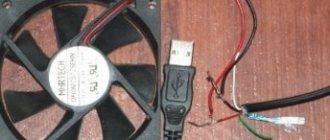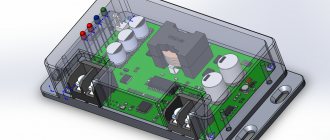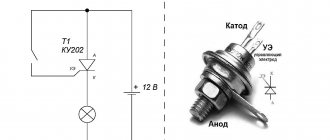Electricity surrounds modern man constantly. But even against this background, it is surprising that tension is present in ordinary things and products (lemon, potatoes, etc.). Using them you can make a simple battery at home. Since the voltage, current and capacity of a battery made at home are far from our usual power sources, there is no point in using such a battery in real life. But as an everyday physical and chemical experiment for educational purposes, the topic is invaluable.
Homemade battery from improvised means
The battery can be made from materials whose properties are similar to those of substances used in industrial conditions.
From lemon
The acid contained in the juice of the fruit acts as an electrolyte. Electrodes are made from thin wire, nails or needles. The iron element is the anode, the copper element is the cathode. The lemon is cut in half and placed in a small container (jar or glass). The wires are connected to the electrodes, the stripped ends are inserted into the pulp of the fruit at a distance of 1 cm from each other.
Using a multimeter, measure the voltage supplied by a homemade galvanic cell. If it is not high enough, several lemon batteries are connected in series.
Jar with electrolyte
Using this method, it is possible to assemble a device that resembles the world's first battery. Electrodes are made of copper and aluminum. Elements must have a large area. The aluminum electrode is connected to the wire using a clamp or bolt, while the copper electrode is soldered. The parts are immersed in a jar at a short distance from each other. A lid with holes is used for fixation. The following compositions are used as electrolytes:
Making batteries with your own hands.
- Ammonia. The substance is mixed with water in a ratio of 1:2. Ammonia cannot be used as an electrolyte. A suitable substance (ammonium chloride) has the form of a white, odorless powder. It is used as a fertilizer or soldering flux.
- Sulfuric acid solution. The substance is mixed with water in a ratio of 1:5. You cannot pour the acid first. In this case, the added water boils and splashes fall on the person’s skin and clothing.
The solution is poured into a glass container so that the distance to the edges of the jar is at least 2 mm. Using a multimeter, measure the resistance and calculate the required number of batteries. The principle of operation of a homemade element is similar to that of a salt power source.
Copper coins
The electrodes are made of aluminum and copper; 9% acetic acid is used as the electrolyte. Coins are cleaned of dirt by soaking them in vinegar. Circles are cut out of cardboard and foil. Cardboard products are soaked in a solution of acetic acid; they must absorb the electrolyte. A column is laid out from circles and coins.
The cardboard piece is placed first, the foil piece is placed second, and the coin is placed third. Wires are pre-connected to the extreme elements. Instead of soldering, the cables can be pressed to metal parts and sealed with tape. When the battery is used, the coin becomes unusable. You should not make power supplies from valuable products.
Battery in a beer can
The negative terminal is the body of the aluminum container, the positive terminal is the graphite rod. You will also need coal dust, polystyrene foam, water, paraffin candles and salt. The top of the jar is removed, a circle is cut out of foam plastic, which is inserted into the container. A hole for the rod is made in advance. The latter is installed in the central part of the jar. The remaining space is filled with coal dust. The material is impregnated with an aqueous solution of salt (3 tablespoons of product per 0.5 liters of water). The edges of the jar are filled with paraffin.
Potatoes, salt and toothpaste
The potato battery is intended for one-time use. It is used to produce a spark by shorting wires. To make the element you will need a large potato, insulated copper cables, salt, wooden sticks and toothpaste. The assembly is done like this:
- Potatoes are cut into 2 equal parts. A recess is formed in one half, where salt and paste are added.
- The ingredients are mixed until smooth. The electrolyte should fill the depression.
- In the other half of the potato, make 2 holes at a distance of 1-2 cm. They should coincide with the filled recess.
- The stripped ends of the wires are inserted into the holes, and the halves are combined. The wires must be immersed in the composition.
- Potato parts are secured with toothpicks. After a few minutes, the cables short out, creating a spark to start the fire.
How to make a battery in a beer can?
To make this battery you should take:
- Salt and water.
- Aluminum jar.
- Paraffin candle.
- Coal or dust from an extinguished fire.
- Graphite rod.
- Polystyrene foam from 1 centimeter and above.
First of all, cut off the top part of the resulting jar. We create a circle from a piece of polystyrene foam. It should fit to the bottom of the jar. You should also make a non-through hole. It is needed for the rod. The foam is placed on the bottom and a graphite rod is stuck into it. Make sure it sits squarely in the center of the can. Next, fill the entire void with coal.
Remember that the graphite rod should not come close to the walls of the jar, otherwise it will not be possible to make a battery.
After this procedure, all that remains is to create a solution from salt. To do this, you will need to take half a liter of water and 3 tablespoons of salt. Now mix everything and let all the salt dissolve completely. Pour the resulting electrolyte into a jar and seal it with wax. But remember the graphite rod should stick out of the can.
Now attach the wires to the poles you just created. The end of the protruding graphite acts as the anode or positive pole. The minus or cathode will be the body of the jar. In order for the completed battery to generate up to 3 volts, 2 such elements should be connected in series.
A clock, light bulb or calculator will operate from such a battery. Such a homemade product can even be recharged.
Required materials and tools
Before starting the experiment, prepare the following materials and tools:
- corrugated cardboard;
- flat copper washers with a diameter of 1 cm - 12 pcs.;
- flat zinc washers with a diameter of 1 cm - 15 pcs.;
- purified water;
- heat-shrink tubing;
- acetic acid 70%;
- salt;
- soldering iron;
- containers for preparing solutions;
- multimeter;
- sandpaper.
Corrugated cardboard is one of the materials for making batteries yourself.
How to make a battery from toothpaste, potatoes and salt?
Such an energy source is disposable. This element will allow you to light a fire in camping conditions using a regular circuit.
Main inventory:
- Paste for cleaning teeth.
- Big potato.
- Salt.
- Copper wires without insulation at the ends.
- Small wood chips, toothpicks or matches trimmed to a sharp point.
Potato mode so that the resulting area is as large as possible. Next, use a knife to dig out a hole from one half. Pour salt there and mix with toothpaste. Fill the hole completely to the brim. This will be our electrolyte.
Now we take the rest of the potato in our hands and create 2 small holes in it for the wires. They should be located above our electrolyte. We push copper wires into these holes, the ends of which are cleared of insulation. Now we connect the 2 potato halves together. In the end, we managed to make a battery at home! Oh, and it also needs to be secured with toothpicks on both sides.
After the design is made, wait at least 5 minutes. Next, short circuit the conductors to achieve a spark. Naturally, if you want to light a fire, you need to strike the spark on something flammable.
Graphite rod: application
The graphite component from old batteries is not only the basis for a new energy source, but also an element that can be used for electric welding. This is done according to a simple scheme:
- Sharpen a graphite rod from an old battery at an angle of 30-40 degrees.
- Using an alligator clip with a non-conductive handle, connect it to the “+” and “-” AC or DC power sources.
- Connect “0” and “-“ to the stripped part.
- As the electrode burns out, it must be sharpened periodically.
How to make a battery at home? You will need available materials, a little enthusiasm and perseverance. In exchange you will receive alternative energy sources.
High-quality Li-ion 18650 charging systems
Battery for UPS
Lithium-ion electricity sources of this type are widely used with various devices. For their long-term operation, constant recharging is required. When charging, the voltage on the element reaches 4.2 V, after which it decreases to 2-3 V. With deep discharges (below 3 V), the service life of Li-ion 18650 is significantly reduced.
Li-ion 18650 charging system
Important! Durability is affected by the number of charge-discharge cycles. This is the optimal number of cycles in which the battery capacity at the first charge (nominal) differs from the current capacity after charging by no more than 20%. The normal indicator is 350-500 charge-discharge cycles.
There are special chargers for such batteries, but you can make them yourself using a circuit.
Homemade charging circuit for Li-ion 18650
The current is adjusted by selecting resistor R4 to the initial value of the charging current. It depends on the battery capacity. For example, if the battery capacity is 3000 mAh, then the charging current is 2-3 A.
Factory charge control systems independently adjust this parameter throughout the entire charging time.
Final word
How to remove paint from clothes at home: how to remove a stain yourself Very often we throw away things that can still be useful, only because we do not know what can be done with them. A laptop battery is one of them. But not only these batteries can be used. For example, if you don’t have “AAA” batteries with a 1.5 V output on hand, you can disassemble the crown (Alkaline). There will be 6 cylinders inside it, which are ideal as missing batteries. They are also able to accept charging. At the same time, what’s most interesting is that the cost of the “Krona” is significantly lower than that of six “AAA” batteries. The only thing to be wary of is swollen elements. They may well ignite. Such an event will not end well.
Copper winding
Now we wind the copper wire around the spoon in several layers. But it’s possible in one. We leave the ends of the wires long, since they will be poles. The turns should not be wound close to each other. Leave small spaces between them. After this, we return to the first step and wind the film. It needs to be wound loosely so as to leave access for the solution to the copper. Next we wind the wire again. We repeat all this up to 7 times or more. At the output we get a rather thick coil with protruding copper branches.
Solution
Pour a teaspoon of salt into a glass container. Then add the same amount of vinegar. Perform light stirring. Next, fill in glycerin from 4 vials.
Why shouldn't you throw batteries in the trash?
A small battery contains a huge amount of dangerous elements.
Once in a landfill, it begins to lose the integrity of its body and release its toxic filling into:
- soil,
- The groundwater,
- atmosphere.
These toxic elements, together with food and drink, enter the human body. It is in this form that the discarded battery comes back to us from the landfill.
The batteries contain:
- Lead. A toxic substance that negatively affects the development of the brain and nervous system, especially in young children. When accumulated in the human body, it can cause coma, convulsions and even death. There is no level of lead exposure considered safe.
- Mercury - dangerous fumes of this substance threaten tuberculosis, affect the liver and gallbladder, and disrupt the functioning of the nervous system. Children and women are most vulnerable to mercury poisoning.
- Cadmium is a toxic substance that causes lung cancer and also negatively affects kidney function. Cadmium remains in the liver and kidneys and is excreted extremely slowly from the body. Nickel-cadmium batteries are very dangerous items. Care must be taken to ensure that children do not play with such items.
- Nickel. Intoxication leads to disruption of the heart.
- Zinc. May cause acute intestinal infections.
Environmental contamination has been occurring for a whole century, and it is impossible to stop this process. However, this can be prevented if used batteries are promptly returned for recycling.











